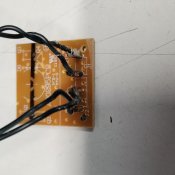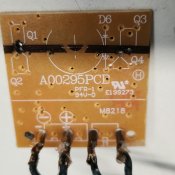Todd248
New elf
- Joined
- Dec 20, 2023
- Messages
- 2
I've read the wiki's and some forum posts on bypassing Multi Function Controllers (MFC's) and could use some help figuring out how to modify these controllers to just be always on.
I think removing the surface mount transistors and connecting the two side pins next to each other may work but don't know enough about circuits yet to confidently reverse engineer these.
I'd like to just get rid of the MFC all together but haven't been able to find a simple solution to provide power and reverse the voltage polarity 50/50 that doesn't involve custom circuit boards. These are the DC lights that only come on half the lights when direct voltage is provided. When polarity is reversed the other half come on. I know Hanson sells a board but it's not available in the US and I need something that controls just 1 or 2 strands distributed over a larger area. This was interesting https://www.mattmillman.com/projects/simple-2-wire-led-christmas-light-controller/ and I may print some boards up to try it out but still looking for a more direct solution.
Anyhow, if I can get these to always on, I intend to dip them in electronics grade epoxy since water and moisture are a major problem here. It will be easy enough to hide/cover the MFC's then.
Pics attached with 2 of the back as it was difficult to get a good angle. Thanks in advance.
Todd
I think removing the surface mount transistors and connecting the two side pins next to each other may work but don't know enough about circuits yet to confidently reverse engineer these.
I'd like to just get rid of the MFC all together but haven't been able to find a simple solution to provide power and reverse the voltage polarity 50/50 that doesn't involve custom circuit boards. These are the DC lights that only come on half the lights when direct voltage is provided. When polarity is reversed the other half come on. I know Hanson sells a board but it's not available in the US and I need something that controls just 1 or 2 strands distributed over a larger area. This was interesting https://www.mattmillman.com/projects/simple-2-wire-led-christmas-light-controller/ and I may print some boards up to try it out but still looking for a more direct solution.
Anyhow, if I can get these to always on, I intend to dip them in electronics grade epoxy since water and moisture are a major problem here. It will be easy enough to hide/cover the MFC's then.
Pics attached with 2 of the back as it was difficult to get a good angle. Thanks in advance.
Todd





